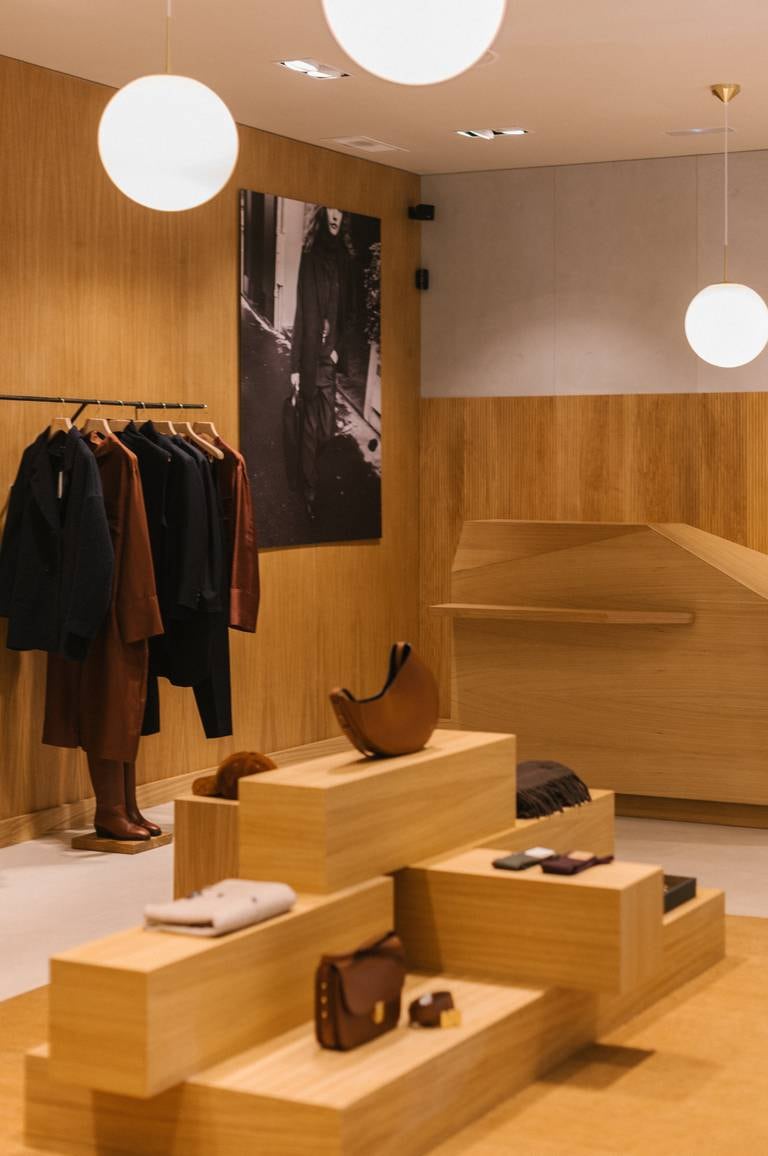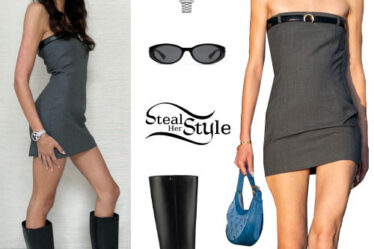
In fashion, there’s no greater compliment than dressing like a French girl.
The industry has long been captivated with French women who personify the effortlessly cool approach to style, such as Coco Chanel in the 1920s, Brigitte Bardot in the 1960s and more modern day influencers like Jeanne Damas, Anne-Laure Mais and Camille Charriere. And since the early 2000s, contemporary French brands — The Kooples, Zadig & Voltaire, Maje, Sandro — have packaged the aesthetic into accessibly-priced sweaters, slip skirts and blazers for the international masses. Last year, French girl favourites Sézane and Rouje continued their stateside expansion, opening stores in Los Angeles and New York.
15-year-old French womenswear start-up Soeur wants to be next.
It’s got the necessary backing. Soeur was sold in September to Style Capital — the Italian investment fund that sold Australian womenswear brand Zimmermann to private equity firm Advent International, at a reported $1.15 billion. With that muscle behind them, Soeur wants to grow outside its home market, beginning with its first UK store in London’s Shoreditch neighbourhood, set to open on Jan. 20. Soeur already has 48 boutiques, mostly around 50 square metres. The London store, which will be over 100 square metres, will be the first in a string of new openings — focussed on Europe for now — aimed at positioning the brand as a real fashion power player.
“The visuals on our website are on par with big luxury brands, but our stores don’t show the strength of the brand,” said Freja Day, Soeur’s chief executive.
Already in 450 doors, including Galeries Lafayette and Harvey Nichols, the brand wants to grow its slate of wholesale partners, particularly in Italy and Spain. All the while, Soeur is keeping an eye on the US, where it has a budding e-commerce business and a few small wholesale accounts, such as the boutique Clic. The brand reached €50 million ($54 million) in sales in 2023, up 40 percent from 2022. It expects to grow around 30 percent in 2024.
But scaling a local brand — even with a strong aesthetic and powerful backer — comes with a number of challenges. Soeur will have to attract shoppers who may not know its name, while continuing to drive excitement among customers in its home base. The contemporary category is notoriously tough to crack. Priced between luxury and fast fashion, it faces competition from both — as well as resale.
Even as inflation eases, it’s a particularly difficult time for brands at the price point, said Marguerite Le Rolland, Euromonitor’s head of apparel and footwear. Plus, blockbuster exits are rare in contemporary: some of the categories’ biggest brands, including Isabel Marant and Ganni, have yet to find buyers.
“The market conditions are toughening up for mid-priced brands,” said Le Rolland. “There is market polarisation, and more consumers are being more careful with their fashion spending in general.”
Creative Liberties
Founded by sisters Domitille and Angélique Brion in 2008, Soeur is known for its vintage-inspired finishes and prints crafted in-house. Prices run from around $60 for T-shirts to $1,500 for shearling coats. Sleek coats, soft vests, tailored trousers, and embroidered and empire-collar blouses fill out the collections.
The dominance of “quiet luxury” has made Soeur’s timeless look trendy, said Roberta Benaglia, CEO of Style Capital. As luxury prices continue to rise, consumers will want other options and wholesale partners are looking for affordable, wearable brands, said Bengalia.
“We weren’t created by a business person who came out of business school and saw a gap in fashion,” said Day. “That’s the DNA of the brand. We have a design process that’s very close to the way that they work in luxury.”
The brand could position itself as a challenger to those at the higher end of the contemporary market, like Toteme, which has seen booming demand for its sophisticated, easy-to-wear silhouettes priced just below labels like Khaite or The Row, said Bengalia. Plus, focussing on that consumer means targeting a smaller slice of the expansive contemporary market, where it’s easy to get lost among undifferentiated brands.
Led by creative director and founder Domatille Brion, Soeur sees design as its biggest strength, said Day. The brand puts creativity first, even if it means injecting unpredictability into the business.
“If next season [Brion] wants to do all linen, she will do all linen … it’s very important that her vision is heard,” said Day. “It’s difficult to be a design-driven brand, but this is the bet that we’re making.”
That said, the product is its best marketing tool, said Day. This year, Soeur will widen its bag and accessory assortment and introduce more upscale fabrics, like washed silks, in apparel. Bags, including its asymmetrical moon-shaped Winona launched in October, are especially effective tools in growing margins and helping the brand recruit younger customers.
A Matter of Scale
To win in the contemporary category, brands need an early edge in positioning. For Isabel Marant, it was strong wholesale distribution; for Sézane it was a close connection with its community through its direct-to-consumer model. Soeur’s retail network is a big advantage, said Bengalia.
“The retail machine is already in place, we just have to help them export their experience to the international market,” said Bengalia.
Beyond its own stores, Soeur will grow through wholesale, which is a cost-effective way to gain footing in a new market, said Le Rolland.
Soeur will also use collaborations to get in front of new customers. In 2023, Soeur debuted a capsule collection aimed at widening its appeal with mass-market windbreaker brand K-Way in September, and worked with luxury loafer maker JM Weston on a shoe to show it could play at the higher-end in October.
Soeur’s capsule collection with American writer and influencer Leandra Cohen in June boosted sales in the region: around 80 percent of Soeur’s sales that month came from the US (overall, the region brought in just 7 percent in 2023). It also helped push Soeur as what Day calls “a cultural brand,” — a label for those in the know. To continue to build on that idea, Soeur will roll out a home goods edit curated by Sophie Pinet, editor-in-chief of Architectural Digest France, this year.
“Brands do well in a saturated market because they are able to tell a story and build a community: they hit the right note with some demographics,” said Le Rolland.



